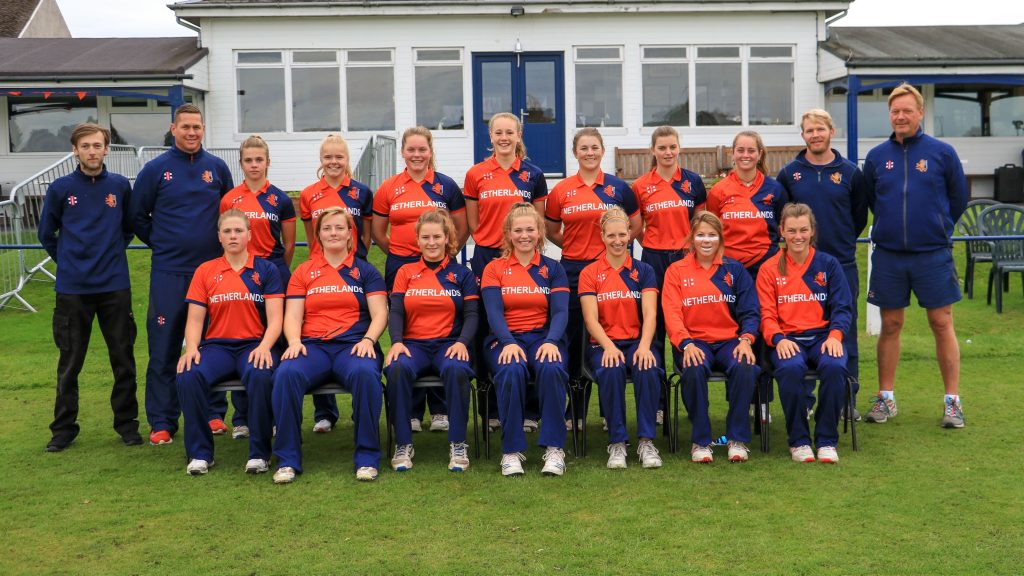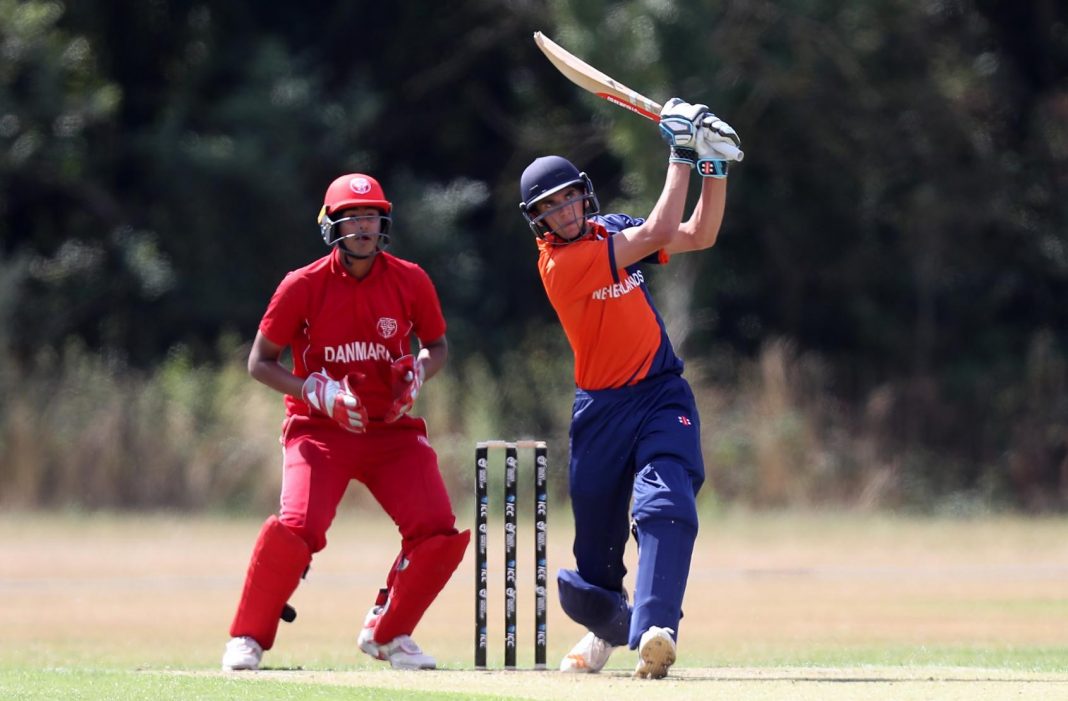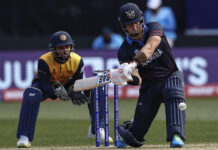One recurring topic at the recent general meeting of the KNCB was the importance of stepping up the recruitment of Dutch youth cricket players, both boys and girls, and the question of whether this task was being given sufficient priority within the overall theme of increased participation.
The push for more emphasis on junior recruitment came mainly from the chairman of the Flamingo’s club, Wulf van Alkemade, who has been a strong advocate for youth development since taking the club’s chair in 2017.
Long the promoters of national youth tournaments – the Under-18 Junior Tournament dates from 1925 – and organisers of tours to England and elsewhere, the Flamingo’s have become more activist under Van Alkemade’s leadership, supporting the involvement of talented young Dutch cricketers in Gary Kirsten’s academy in South Africa and annually providing advice to the KNCB Board on Dutch youth cricket strategy.
There is, however, a huge difference between acknowledging the vital importance of junior development for the long-term health of the game in the Netherlands and implementing effective strategies to recruit and retain boys and girls in increasing numbers, ensuring that sufficient numbers progress into the senior ranks.
The statistics presented by outgoing CEO Jaap Wals tell part of the story: in 2018 there were just over 1000 boys playing in the KNCB’s youth competitions, and 150 girls, and there has been only limited progress in the two years since (although the Covid-19 pandemic may distort the figures somewhat).
The appointment of Marike Dickmann as the KNCB’s first Development Officer in 2009, the introduction of a Youth Plan in 2011 and the switching of the junior competitions from Saturday to Sunday in order to avoid a clash with football and hockey in May and June were able to arrest what had until then been more than a decade of steady decline, but the many initiatives which have followed have been unable to bring about a significant overall increase in playing numbers.
The exception is in girls’ cricket, where the establishment of national Lionesses squads and more support in a few clubs have brought the numbers up to the present level; 150 across all age groups, though, is an insufficient base for building a strong women’s competition, and beyond it a strong national team.
There are many factors contributing to this disturbing picture in Dutch youth cricket.
Too few Dutch clubs have been willing to devote time and resources to the development of junior cricket: of the KNCB’s 40 normal member-clubs, fewer than half have a youth section, and while there have been encouraging signs of progress at clubs like Punjab Rotterdam and VVV Amsterdam, there are still many who do not see the future of the game as any part of their responsibility.
It may be that the time has finally come for the KNCB to insist that any club which aspires to play in the upper echelons of the men’s competition must have a functioning youth department, and quite possibly a women’s programme as well.

The great majority of those 40 clubs, moreover, is concentrated in the Randstad, the urbanised west of the country, and across much of the Netherlands cricket has effectively ceased to exist; in cities like Arnhem, Groningen, Dordrecht and Roosendaal, where cricket clubs once existed, the game has become extinct, and the KNCB has done little to stem this decline.
This means that successful national familiarisation programmes, notably the annual Bilingual Schools’ Cricket Challenge, take place in a vacuum, and have certainly not led to a revival of cricket in the north, east and south of the country.
There has been no joined-up strategy to make Dutch cricket truly national again, and while there are defensible arguments for concentrating on areas of existing strength, to focus too heavily on the major centres of Amsterdam, Den Haag and Rotterdam and a few provincial cities like Haarlem and Utrecht risks isolating the outliers like Salland Deventer, Quick Nijmegen and MOP Vught.
Even in the clubs with well-established youth programmes, total numbers seldom get anywhere near three figures, with the consequence that it only takes a few departures to make an age-group no longer viable. The organisations themselves are notoriously dependent on the input of a few dedicated parents.
A full-scale network of regional development officers and coaches to support the efforts of the clubs is an urgent need. The decision in 2012 to move away from a regional approach was a profound mistake, and it is heartening that two new Regional Development Officers have been appointed this year.
So are the indications that the additional €105k. earmarked in next year’s provisional budget will fund further appointments of this kind, although even this is probably not enough to bring about a quantum shift in youth recruitment.
Coaches are as important as development officers, and most clubs could benefit from more systematic support for their own youth leaders from a cadre of KNCB-funded Level 2 and Level 3 coaches. Inexperienced parents, sometimes fixated on the progress of their own children, can run SMASH! cricket programmes for the Under-9s. But more expert coaching – and coaching of volunteer coaches – is needed as kids move into hard-ball cricket and formats closer to the adult game.
The talented few who make it into the national Lions and Lionesses programmes get that specialised support as a matter of course, but for those outside that group volunteer coaches, however enthusiastic, are not always sufficient to maintain the interest and develop the ability of youngsters who might be tempted to abandon the game.
If the KNCB is to have any hope of achieving its declared ambition of achieving ICC Full Membership within five years it is vitally important that significant progress be made in increasing playing numbers, at least to the levels envisaged in its Strategic Plan.
That will take considerable investments of both money and time, and greater co-operation between national and local agencies than has been possible hitherto. But there is no more important task facing Dutch cricket.
Rod Lyall was a member of the KNCB Board from 2012 to 2016, and vice-chairman with responsibility for youth and women’s cricket and development from 2012 to 2015. From 2015 to 2019 he directed the youth programme at Amsterdam club Qui Vive.
You’re reading Emerging Cricket — brought to you by a passionate group of volunteers with a vision for cricket to be a truly global sport, and a mission to inspire passion to grow the game.
Be sure to check out our homepage for all the latest news, please subscribe for regular updates, and follow EC on Twitter, Facebook, LinkedIn and YouTube.
Don’t know where to start? Check out our features list, country profiles, and subscribe to our podcast.
Support us from US$2 a month — and get exclusive benefits, by becoming an EC Patron.







